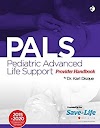This is an introductory overview to pharmacy practice.This introductory overview to pharmacy practice is essential for first year undergraduate students, providing an overview of the principal pharmacy practice topics in a practical and succinct manner. The text provides a starting point for further study and is facilitated by regular signposting and referencing to specific texts. A useful and easily navigated glossary of reference terms is also included.Additional e-learning resources are provided including workshops on law and ethics, SOPs and communication and several dispensing practicals.
Table of contents :
Cover......Page 1
Dedication......Page 6
Table of Contents......Page 8
Foreword......Page 10
About the authors......Page 11
Acknowledgements......Page 13
Pharmacy Practice: definitions......Page 14
More than a definition......Page 15
References......Page 20
History of the NHS......Page 22
Structure of the NHS......Page 23
Recent changes in the NHS......Page 29
Pharmacist roles within the NHS......Page 32
References......Page 35
Introduction......Page 36
The past role of the community pharmacist......Page 37
Today’s community pharmacist......Page 39
Essential services......Page 40
Other services......Page 42
References......Page 44
Traditional roles of the hospital pharmacist......Page 46
The structure of a typical hospital pharmacy department......Page 47
Clinical pharmacy......Page 49
Teaching......Page 50
Specialisation in hospital pharmacy......Page 51
Useful resources......Page 54
Introduction......Page 56
Research and development......Page 57
Manufacturing......Page 58
Quality assurance......Page 59
Clinical trials......Page 60
Sales and marketing......Page 62
Regulatory affairs......Page 63
General management and business......Page 64
So you want to be an industrial pharmacist . . . what next?......Page 65
Useful resources......Page 66
What is medicines management?......Page 68
Development of medicines management......Page 69
Consequences of poor medicines management......Page 71
Types of medicines management......Page 72
Ways in which medicines management is achieved......Page 75
Community pharmacists and medicines management under the new Pharmacy Contract......Page 78
References......Page 81
The Royal Pharmaceutical Society of Great Britain......Page 84
A brief history of the Society......Page 85
The structure of the RPSGB......Page 86
The future of the RPSGB......Page 87
References......Page 88
Interacting with patients......Page 90
Interacting with other health professionals......Page 92
Presentations......Page 93
Useful resources......Page 97
Types of medicine......Page 98
Prescription forms......Page 99
Types of prescription form......Page 100
Restriction to medicines and appliances prescribed on NHS FP10 (and variations) forms......Page 106
References......Page 107
Useful resources......Page 108
Good prescribing principles – a stepwise approach......Page 110
Interpretation of prescriptions......Page 112
Useful resources......Page 120
Choice of packaging during dispensing......Page 122
Types of packaging......Page 123
Types of packaging materials......Page 124
Practicalities of packaging......Page 128
Useful resources......Page 129
The importance of labelling......Page 130
Labelling requirements for different categories of medicinal products......Page 131
Manufacturers’ labelling requirements......Page 133
References......Page 136
Legal factors involved in extemporaneous preparation......Page 138
Liquid preparations......Page 139
Topical semisolids......Page 140
The practice of extemporaneous preparation......Page 141
References......Page 146
Introduction......Page 148
What is compliance?......Page 149
What is concordance?......Page 150
Why do people not adhere to prescribed medicine regimens?......Page 152
How can adherence to medication be improved?......Page 156
What does concordance mean, in practice, for pharmacists?......Page 159
Developing a concordant approach......Page 160
References......Page 162
Introduction......Page 164
Legal and ethical considerations when selling and supplying medicines......Page 165
Selling over-the-counter medicines......Page 168
Supplying prescribed medicines......Page 170
Preventing errors when selling or supplying medicines......Page 173
When mistakes are made......Page 176
References......Page 180
Enteral routes......Page 182
Drug delivery across mucous membranes......Page 184
Topical drug delivery......Page 185
Inhalation drugs......Page 188
Parenteral routes......Page 189
References......Page 193
Glossary of terms commonly used in Pharmacy Practice......Page 194
Index......Page 214





















